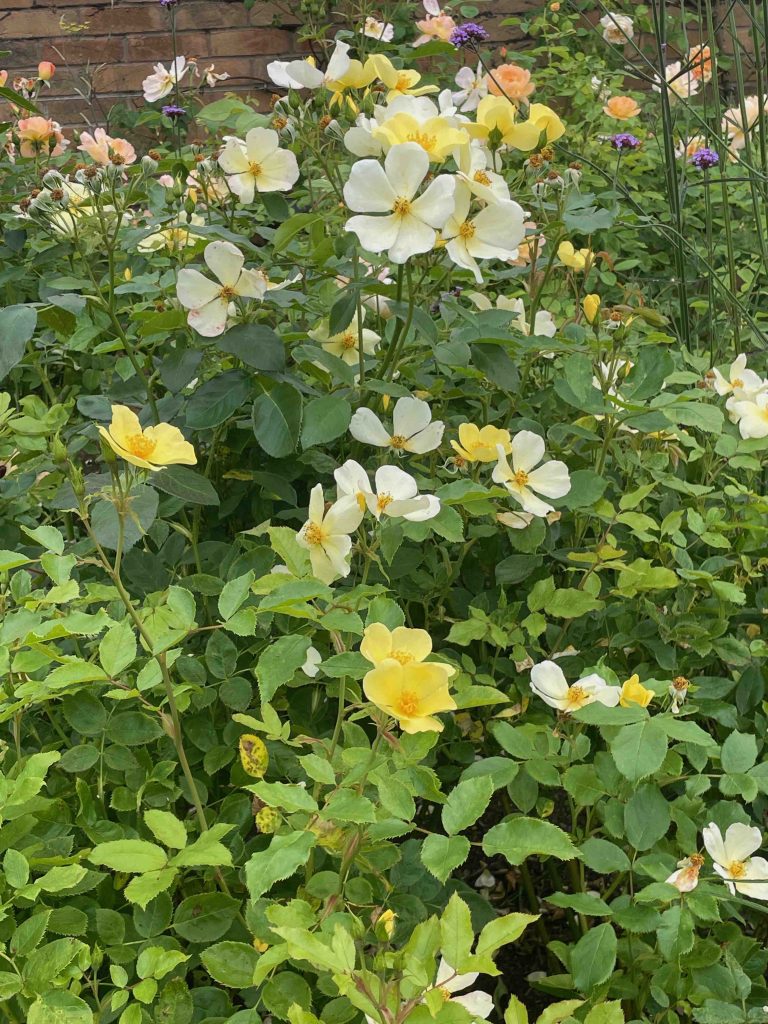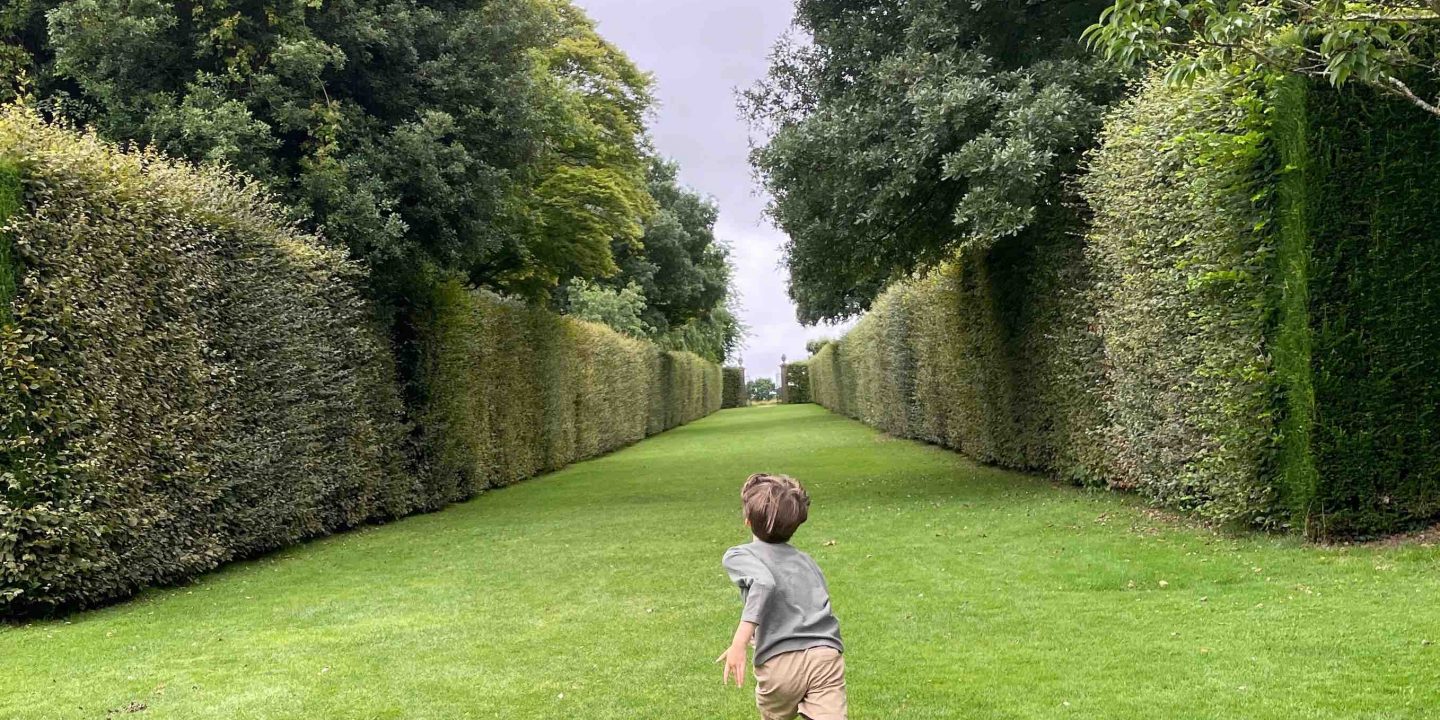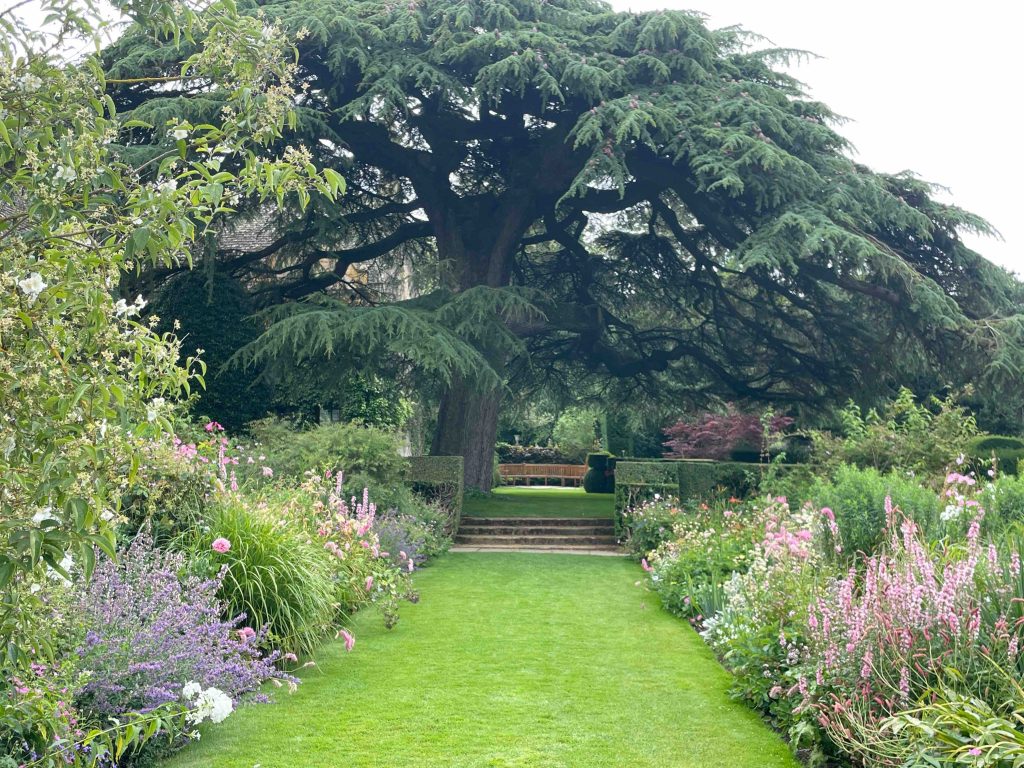
Now autumn is really upon us how about a family ‘day out’ with Alison Agnew, our resident gardening expert, to cheer ourselves up.
My apologies for failing to write an article for September’s gardening column but in August I was just having too much fun with friends and family despite the dismal summer weather.
The occasional days of warmth in September have just emphasised what a very cool summer we’ve had. It’s been both good and bad for gardens – the cool prolonged the flowering for many plants and young trees and shrubs have grown well. However, the damp promoted fungal problems as well as slugs and snails galore.
I was caught out by the lack of real rain though – suddenly realising that the garden needed water despite the damp and drizzle. Three days of solid watering was, inevitably, followed by several days of serious downpours but the garden has really perked up – the cannas have doubled in size and all the daisy plants in the hot garden are flowering their heads off. The sad lawns that we fed in August to no effect are now transformed into lush green swards that need mowing every five minutes.
Garden visiting
Our daughter has truly come of age – she is planting her first proper garden. It will be a rose-rich garden so we made a pilgrimage to the David Austin Rose Garden in Shropshire. This was a good time to visit – all roses look great in June but which roses are still good in August? Which are disease resistant – even in a bad summer? Are the colours in catalogues true? What does the shrub look like – tidy? Floppy? Are the rose flowers too heavy for their stems?
On the way there we visited Hestercombe, Hidcote and Kiftsgate three gardens heavily influenced by Edwardian garden design.
Hestercombe
Although there are records of a garden on the site from 1249, the existing Hestercombe garden starts in 1750 with a 40 acre Romantic Period landscape garden of naturalistic lakes, valleys and woodland with walks and follies. Lovely to walk around and with great views.
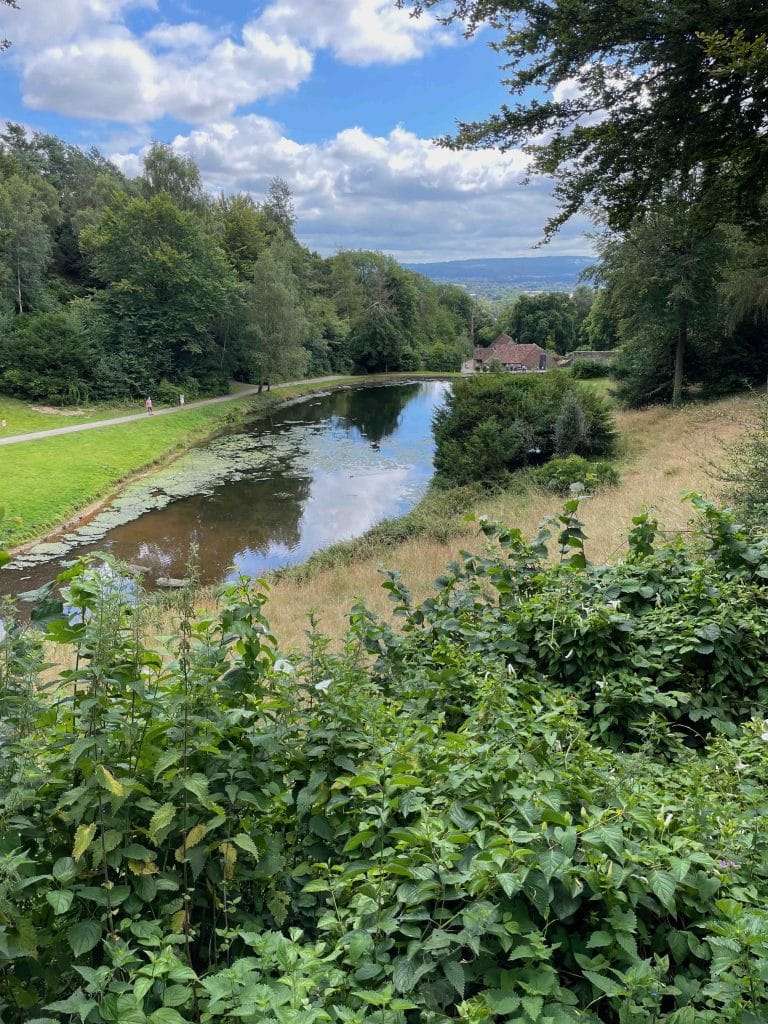
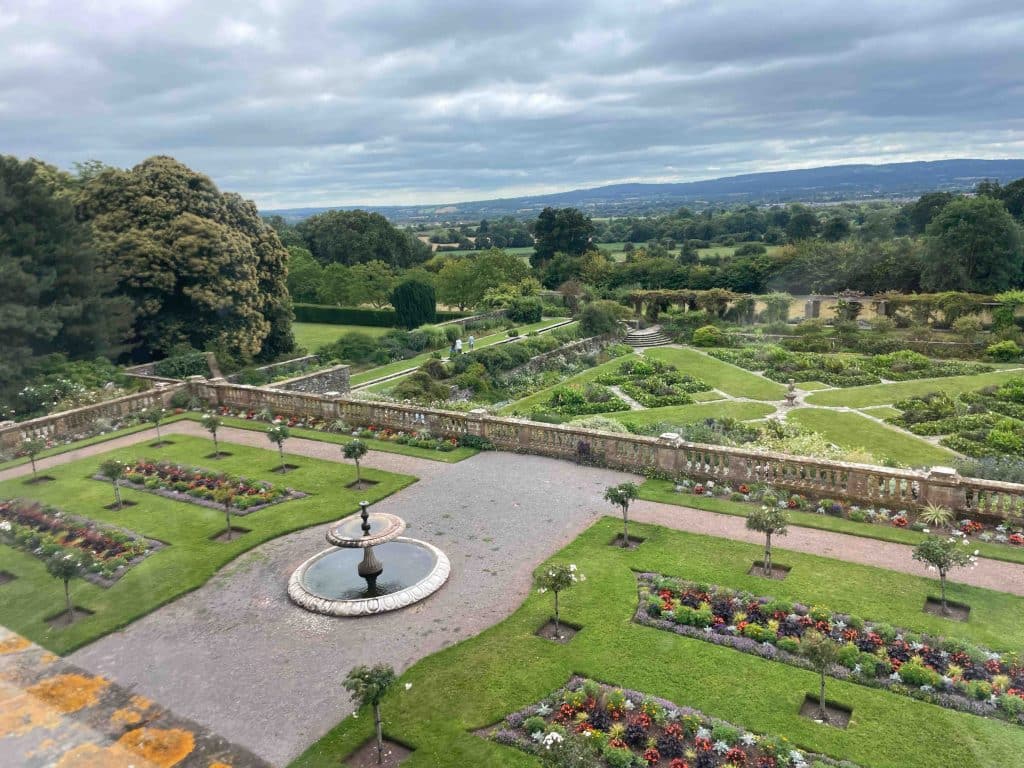
A formal parterre was added to the house in 1870 and is still planted in typical Victorian style with brightly coloured annual bedding plants which I cannot like. The parterre doesn’t marry well with the later Arts and Crafts garden designed by Edward Lutyens and planted by Gertrude Jekyll that lies below it. Hestercombe was this pair’s first collaborative garden and it is a real winner. Classic Lutyen’s features of rills and ponds, semi circular steps, pergolas and lovely paving. Typical of their work, the formal structure of the garden is softened by both the planting and the exquisite use of different building materials – stone, tile, cobble, wood and even ceramic pots.
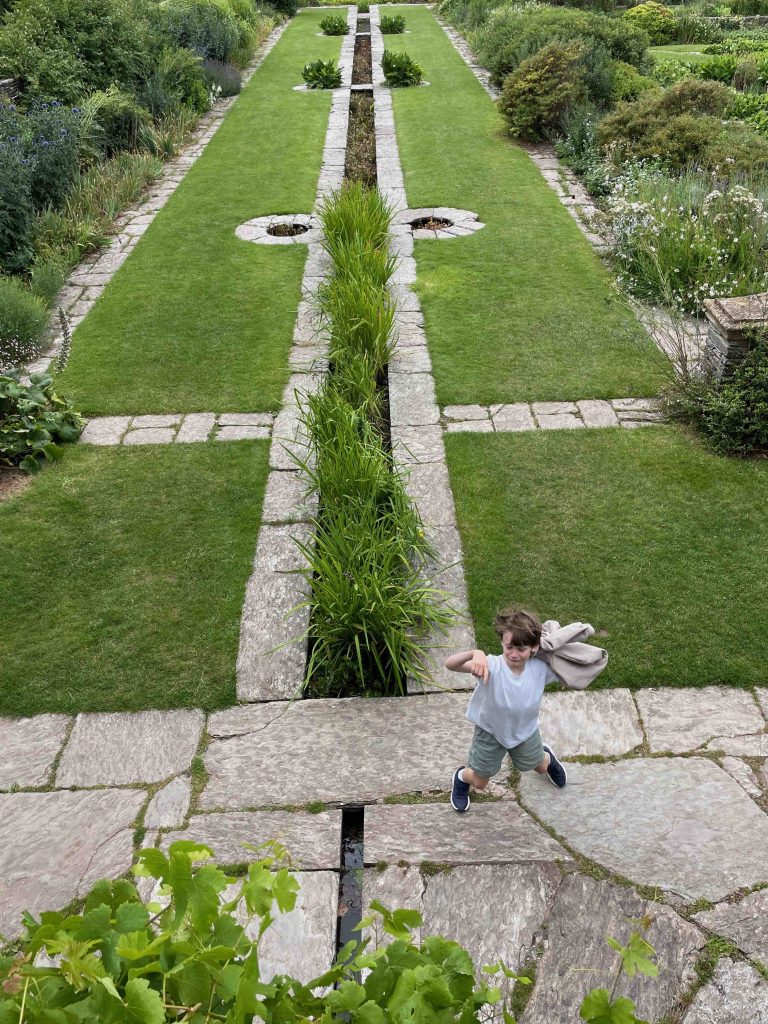
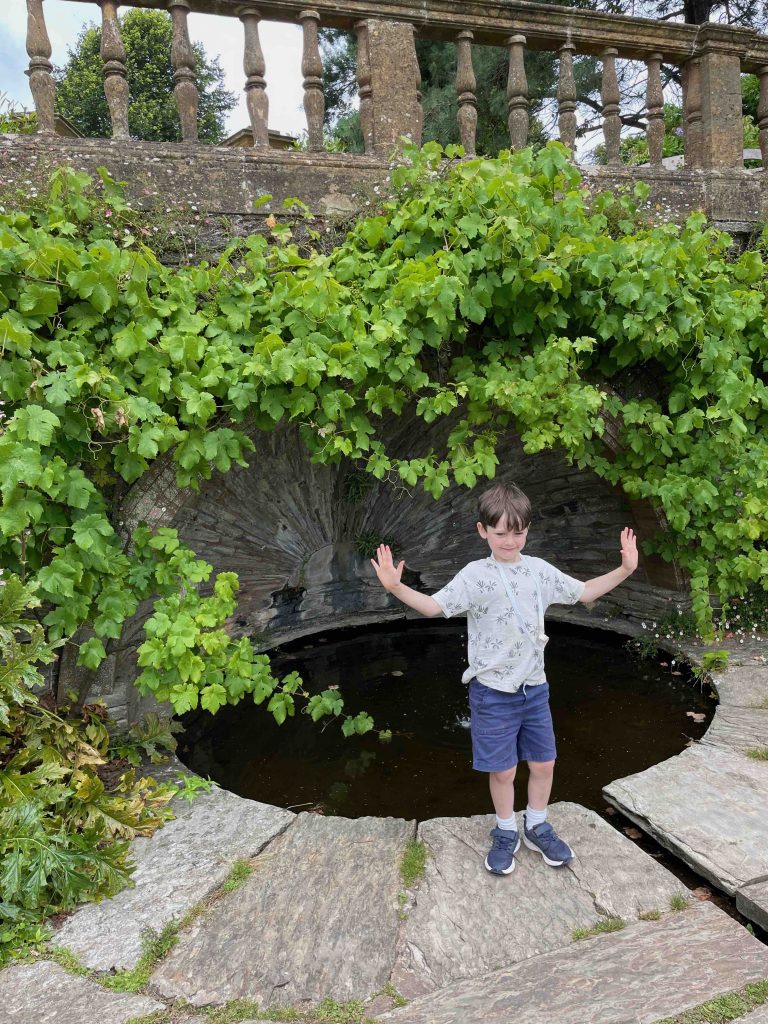
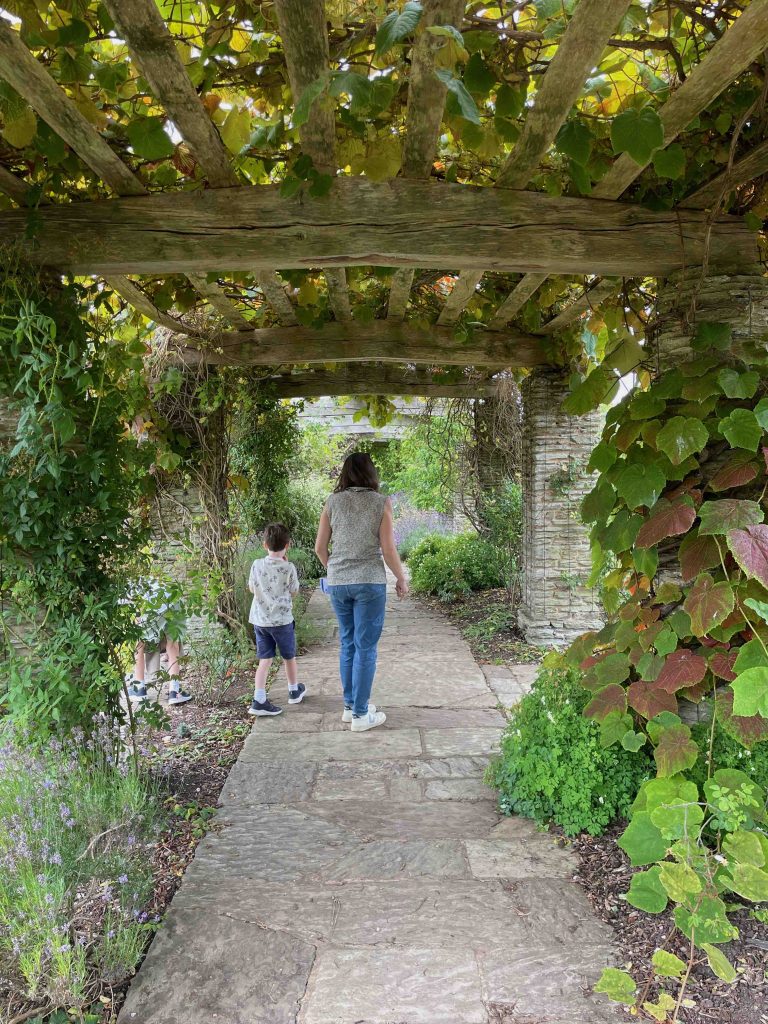
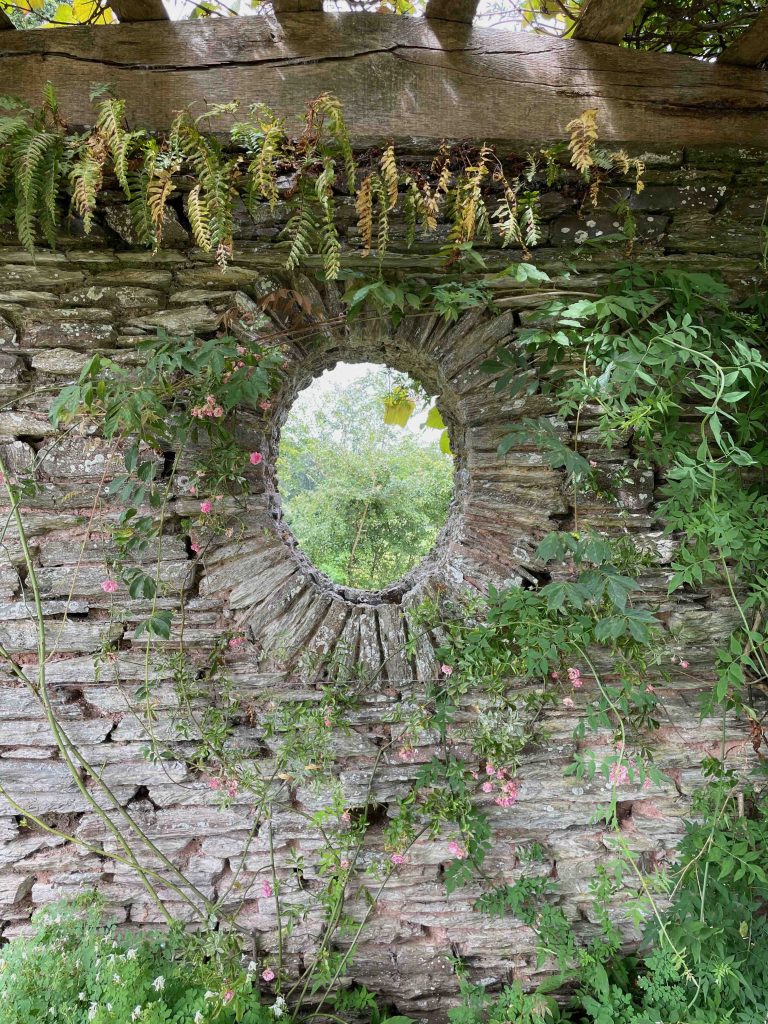
The planting is, apparently, to Jekyll’s original plans but I thought it disappointing. The central area – the great platt – has beds framed by broad bands of Bergenia with red flowered Canna dominating the central areas.
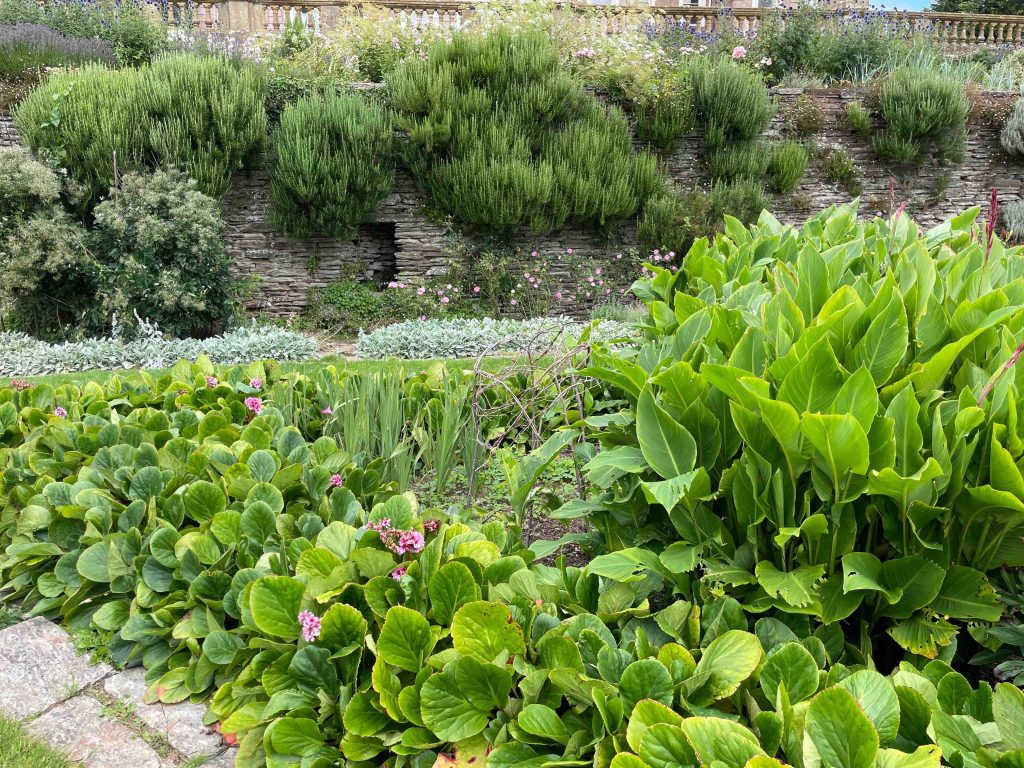
Perhaps this formal planting was an attempt to bridge the Victorian parterre with the newer garden but it seemed at odds with the more gentle and more typically Jekyll planting of the peripheral borders of mixed shrubs and perennials. Sadly, some of the planting was a bit tired with many of the roses well past their ‘sell by’ date.
Nevertheless, it is an impressive and lovely place, elegantly setting the house into its garden and the garden into the landscape. Well worth a visit.
Hidcote Garden
Hidcote Garden in Gloucestershire is one of my favourite English gardens. Designed by the owner, Lawrence Johnson, soon after he purchased it 1907 and largely completed by 1920; it is a classic of Edwardian garden design. A series of distinct garden ‘rooms’ linked and separated by clipped hedges and walkways. There are formal ponds and topiary and beautifully designed garden structures too.
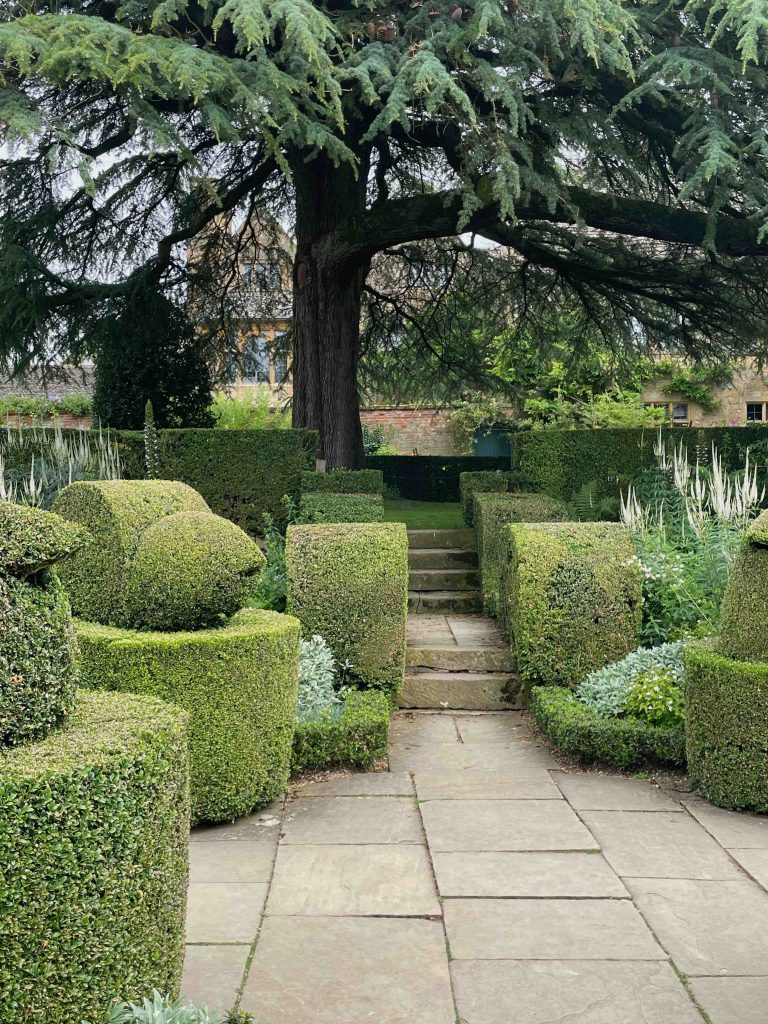

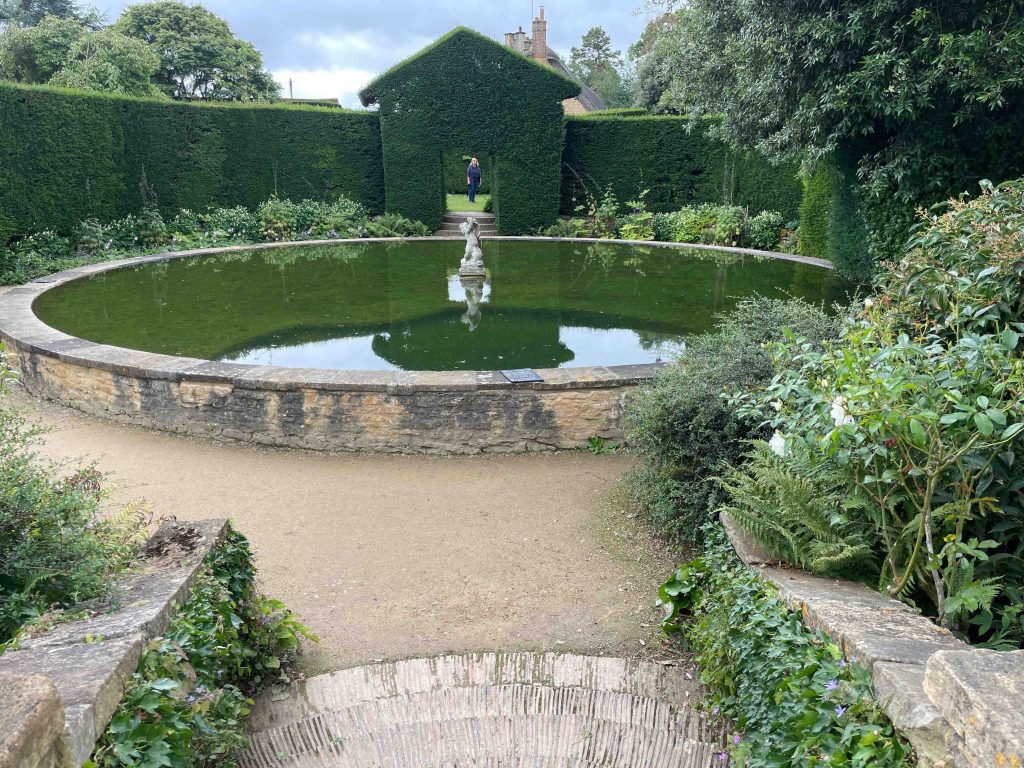
The formal gardens close to the house give way to wilder parts of the garden that blend into the countryside beyond. Though I love the surprise of the sudden transition produced by the long walk that leads up to a pair of beautiful wrought iron gates at the top of a ridge. You expect another structured space beyond but they directly open to countryside instead.
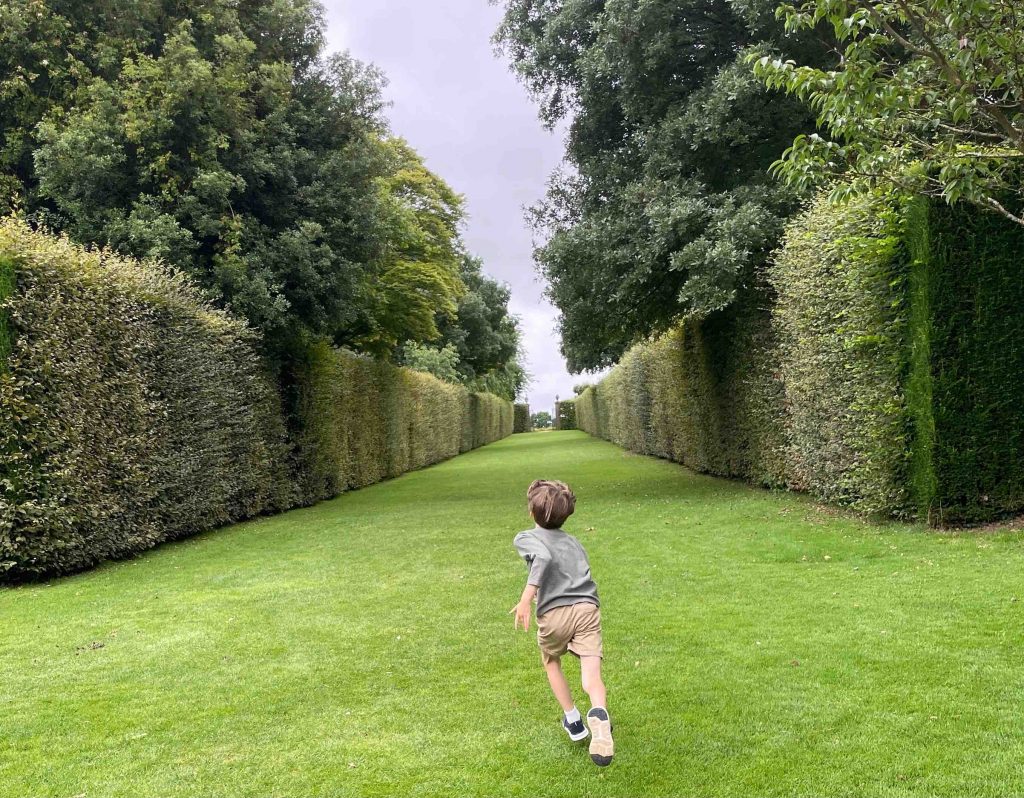
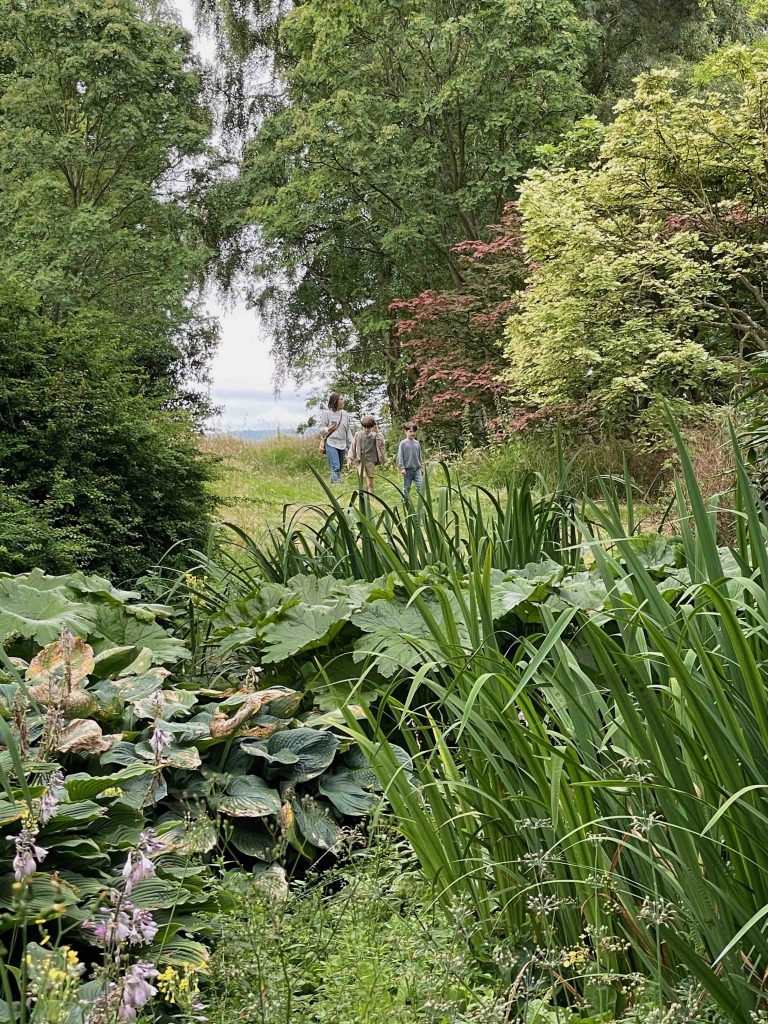
Lawrence was a great plantsman, engaging in plant hunting expeditions and introducing a wide range of plants from many countries. Despite this diversity of plants, the garden doesn’t shout ‘plant collection’. The plantings demonstrate a carefully controlled use of form and colour in each of the ‘rooms’. The double red borders of the axis walk are one of the most famous. These were supposedly inspired by a painting by Augustus John of Madame Suggia in a red silk dress – the light reflection on the fabric producing a spectrum of rich red tones from bright crimson to deep burgundy. The border sustains this colouring from spring tulips to summer annuals and lilies but really hits its peak in late summer with dahlias, cannas and purple-leaved bananas.
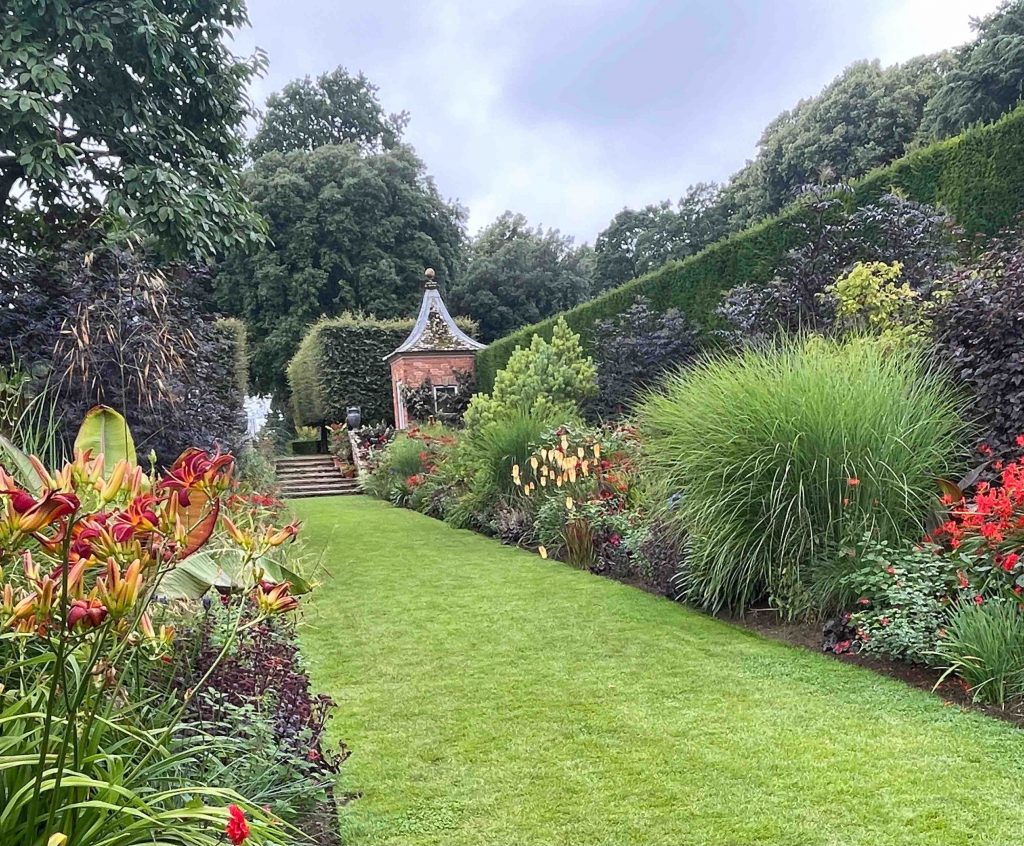
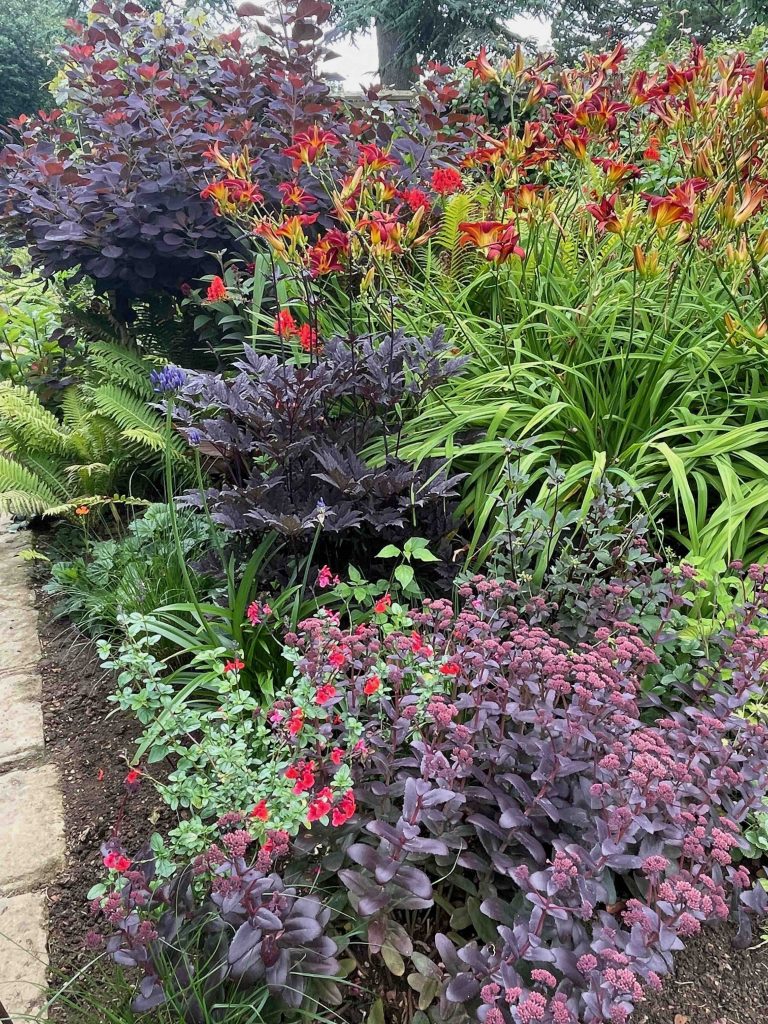
There are also yellow with blue and white ‘rooms’ and soft pinky purple borders and plain green spaces and, a rockery and a lime avenue and, and – it really is a fabulous garden.
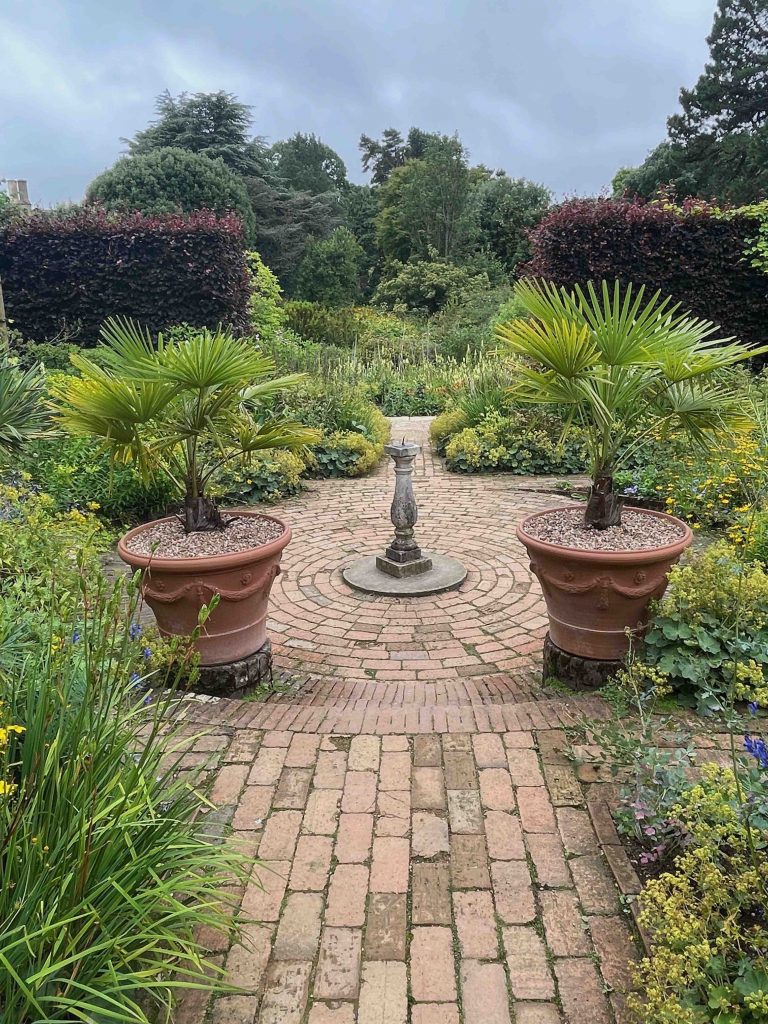
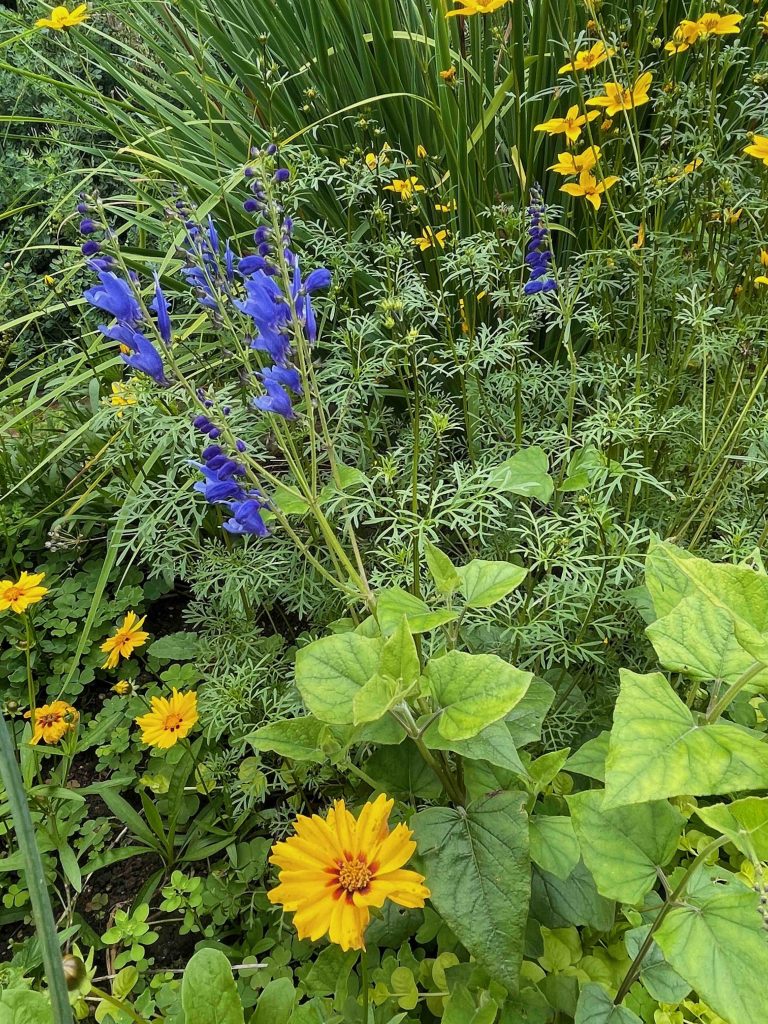
Nevertheless, its near neighbour, Kiftsgate, is dearer to my heart.
Kiftsgate Court Gardens
Kiftsgate Court Gardens is the collective achievement of three women gardeners: grandmother, mother and daughter. The garden was started by Heather Muir in the 1920’s and much influenced by her friend and neighbour Lawrence Johnson but she established the ethos of an evolving garden rather than one that was substantially designed in one go – like Hidcote.
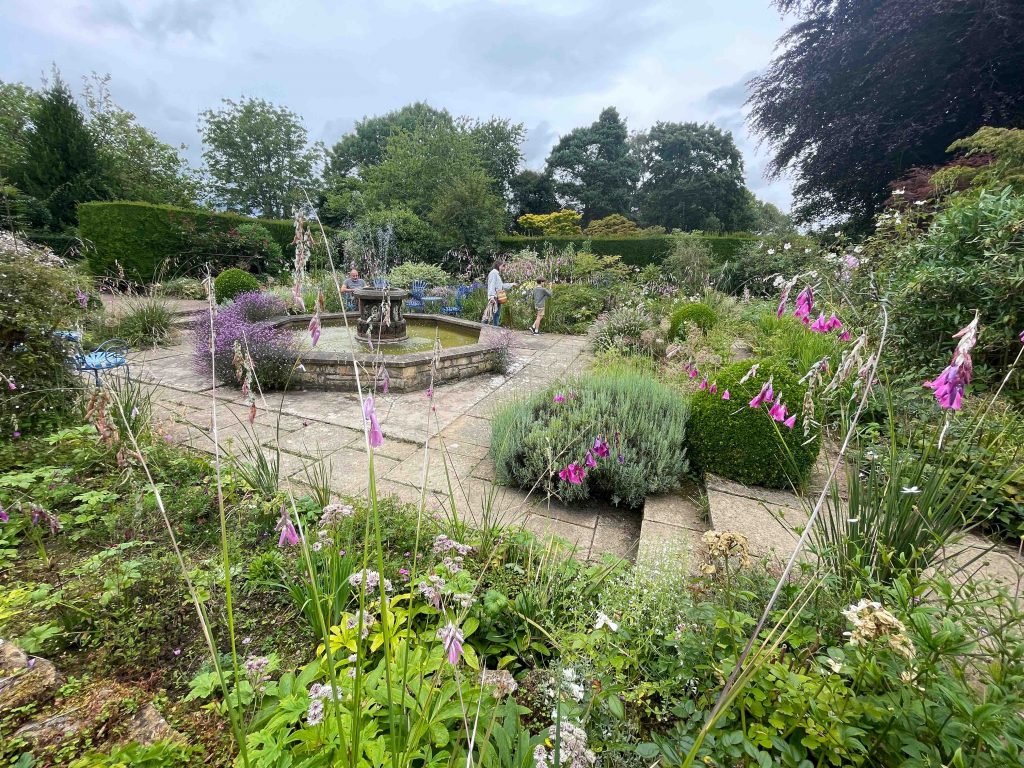
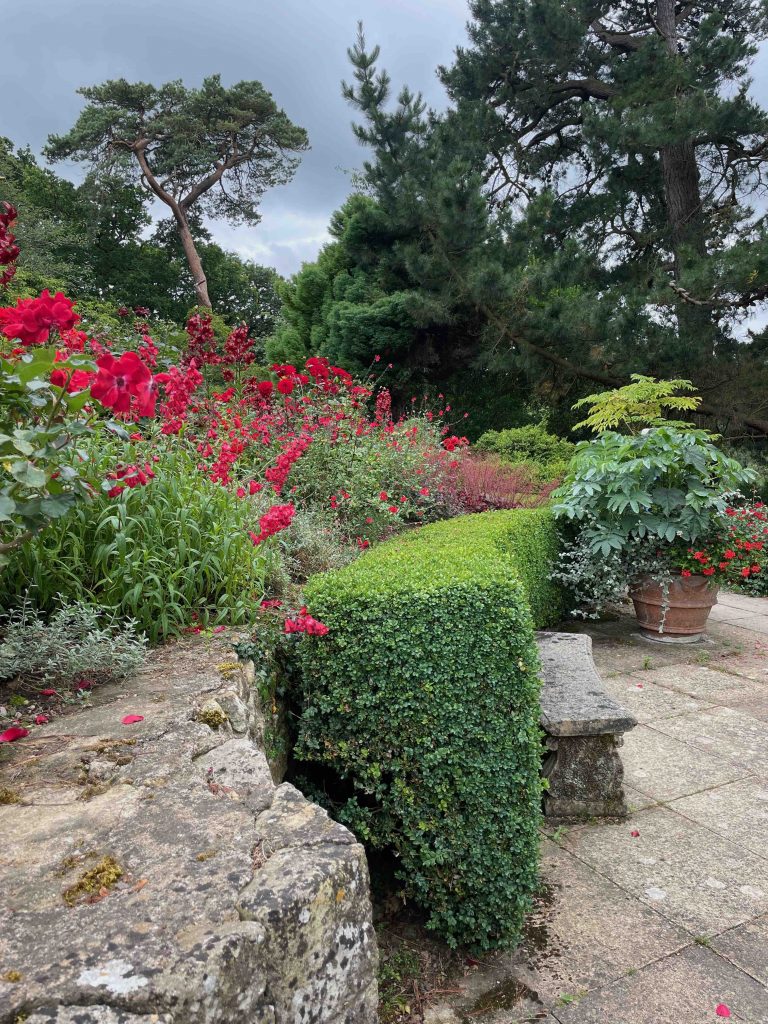
The following generations have added significant features: Diany Binny added the wonderful semi-circular swimming pool to the Muir lower garden. Anne Chambers replaced the tennis court with an inspired water garden designed by Sir Geoffrey Jellicoe with the addition of the leaf sculpture by Simon Allison – the golden leaves waive gently in the wind and trickle water into a black pool. Even a few moments alone there are sublime.


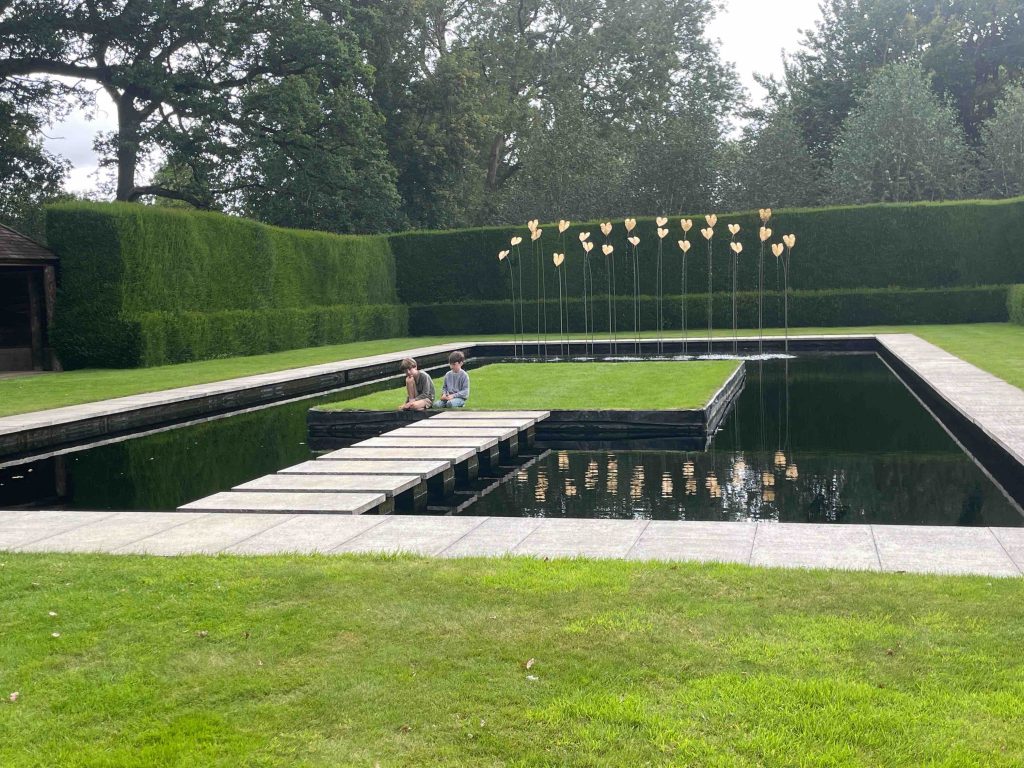
The quality of the planting is impressive, with an adventurous use of colour that is sometimes jarring but mostly joyous. It is this sense of fun that holds the garden together – embracing the quirkiness of the different areas.
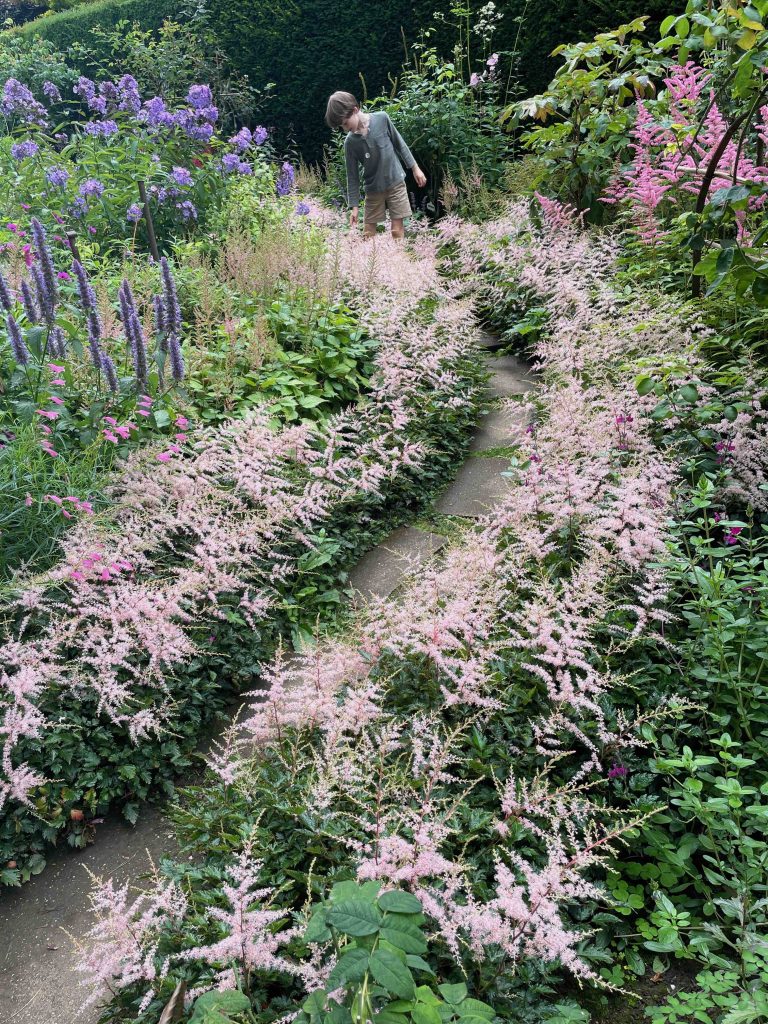
A recent addition is the exception – a mound and bowl-shaped excavation with a coloured gravel pavement chevron design at its base which I think is totally incongruous as well as just plain ugly! I cannot find out who the designer was – perhaps they’re staying incognito.
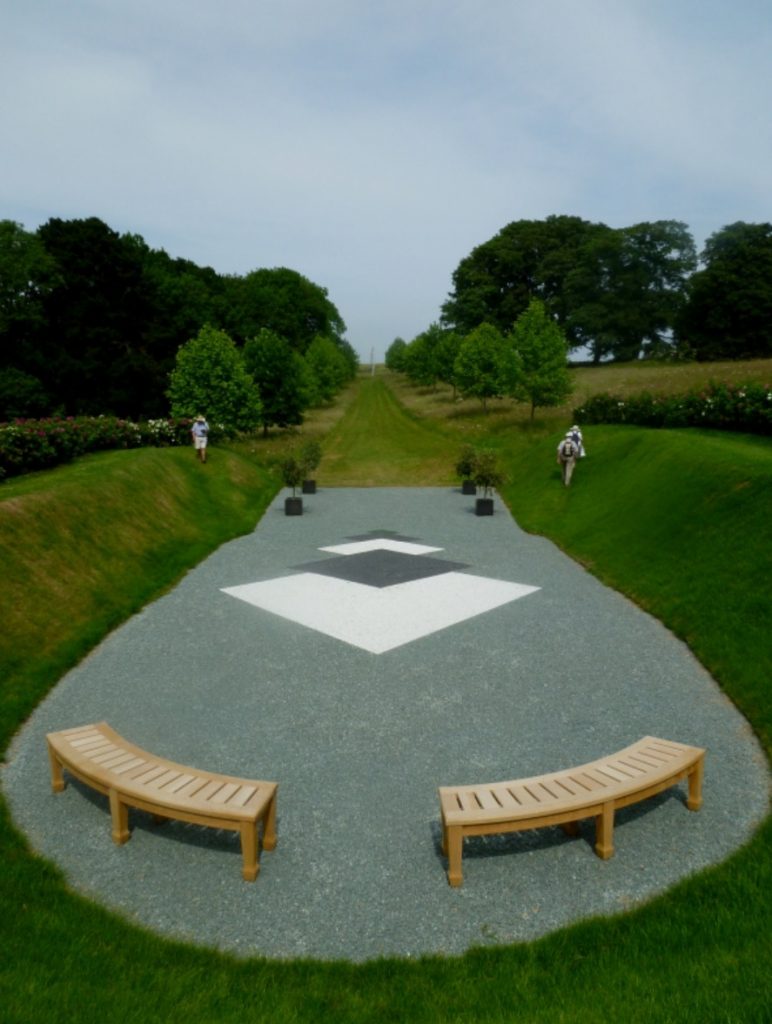
Kiftsgate is a garden I could return to over and over but I’m not quite sure why. It has created strong images that I don’t forget – in particular the view over the swimming pond to the stunning landscape beyond. Perhaps it’s because its scale is more domestic than many of the ‘great’ gardens. Perhaps it’s because, although it is a very intentional garden, it carries the imprint of several designers so it is less coherent than Hidcote or Sissinghurst but perhaps more inspired and less smug!
Finally we got to Shropshire and our pilgrimage’s destination.
David Austin Gardens
The David Austin Rose Garden is really a demonstration garden laid out to show roses in the context of classic garden features -walls, pergolas, ponds, hedges etc. There are plants other than roses but not many.
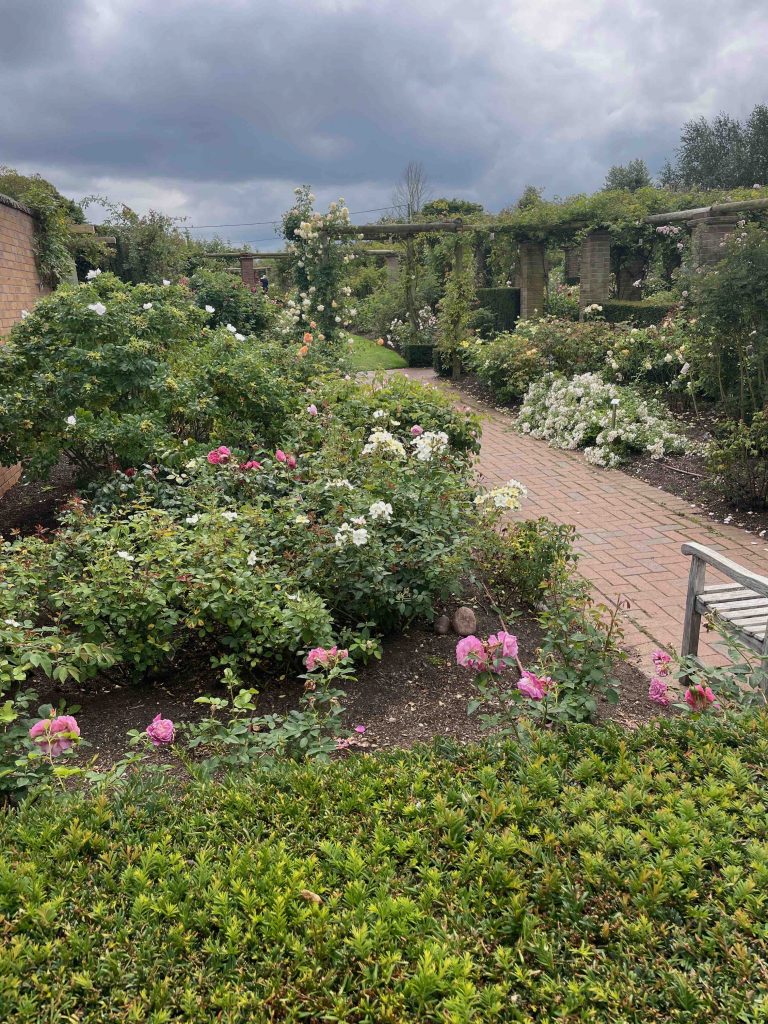
My grandsons were bored by this garden although they had loved the others we visited. It was crowded and finicky and they had nowhere to run so they climbed on the statues and ignored warning signs instead. The garden was pretty in a formulaic way but I don’t think I’d bother to visit unless on a rose hunting mission.
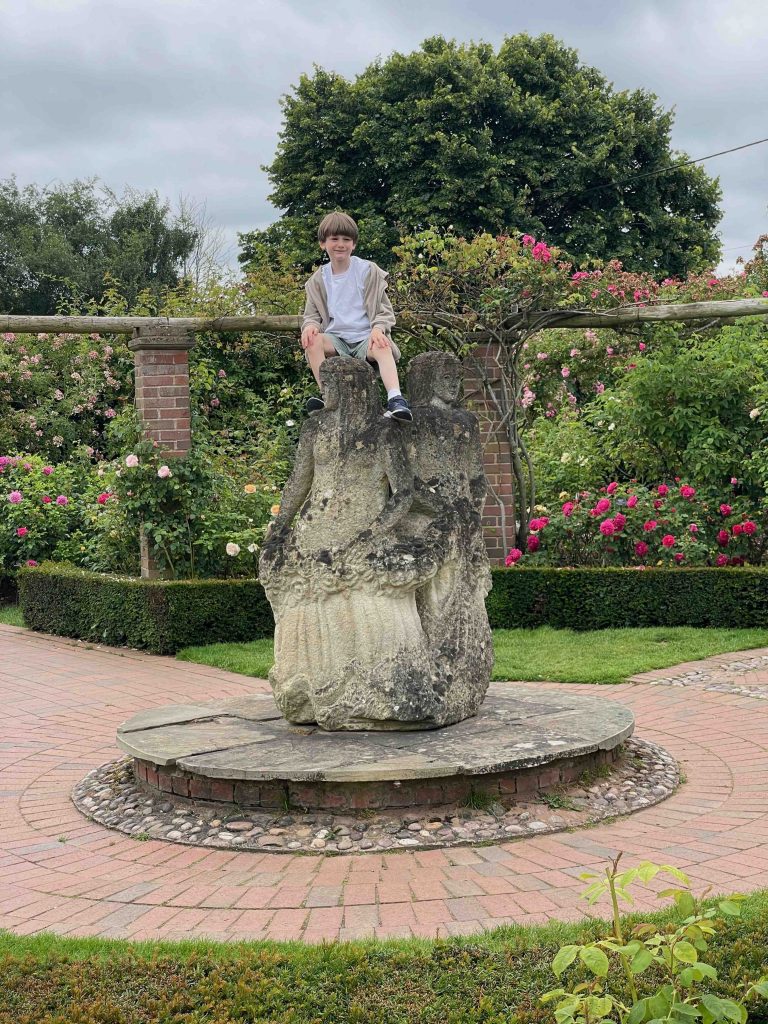
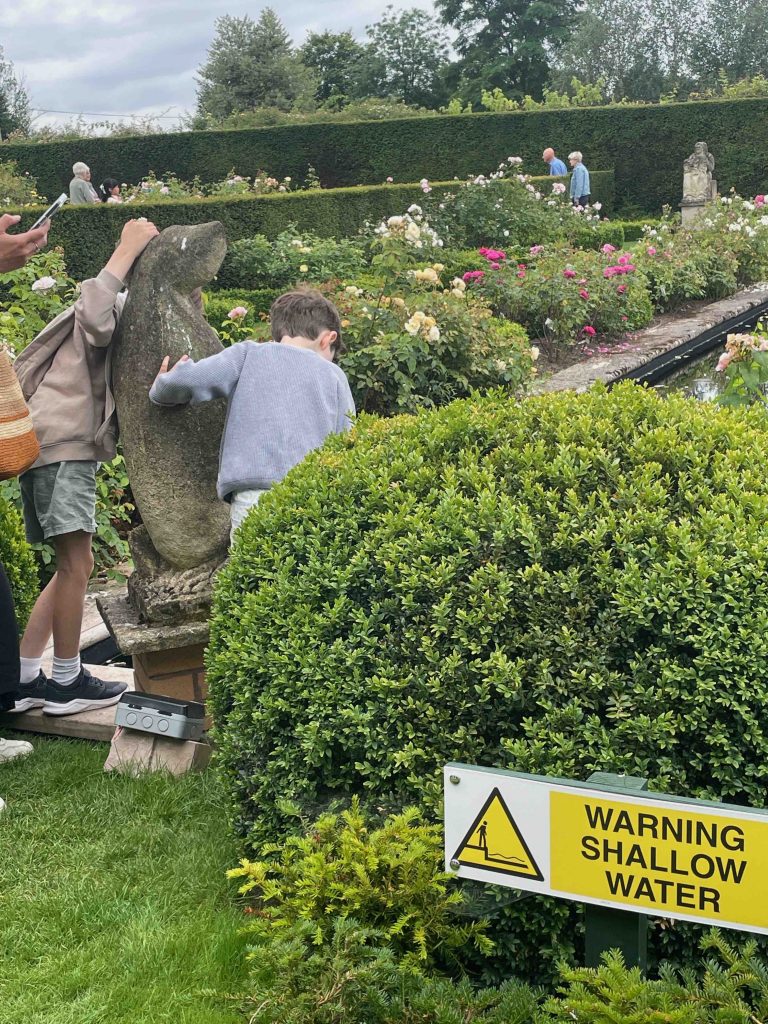
My daughter had a shortlist of roses – a long one – so it took sometime to hunt them all down. Disappointingly, not all the roses in the current David Austin catalogue were on display, while others were shown over and over again.
In particular, there were none of the dark red roses that we were hunting. David Austin have also discontinued several of their best known roses – among others, gorgeous golden yellow Graham Thomas is no more. I’ll be taking cuttings of mine. Austin claim that their newer cultivars are healthier and we saw several that are very lovely indeed. The 2023 rose Dannahue has clear apricot buds opening to creamy gold and has pretty foliage also suffused with orangey tones on the back and edges of leaves.
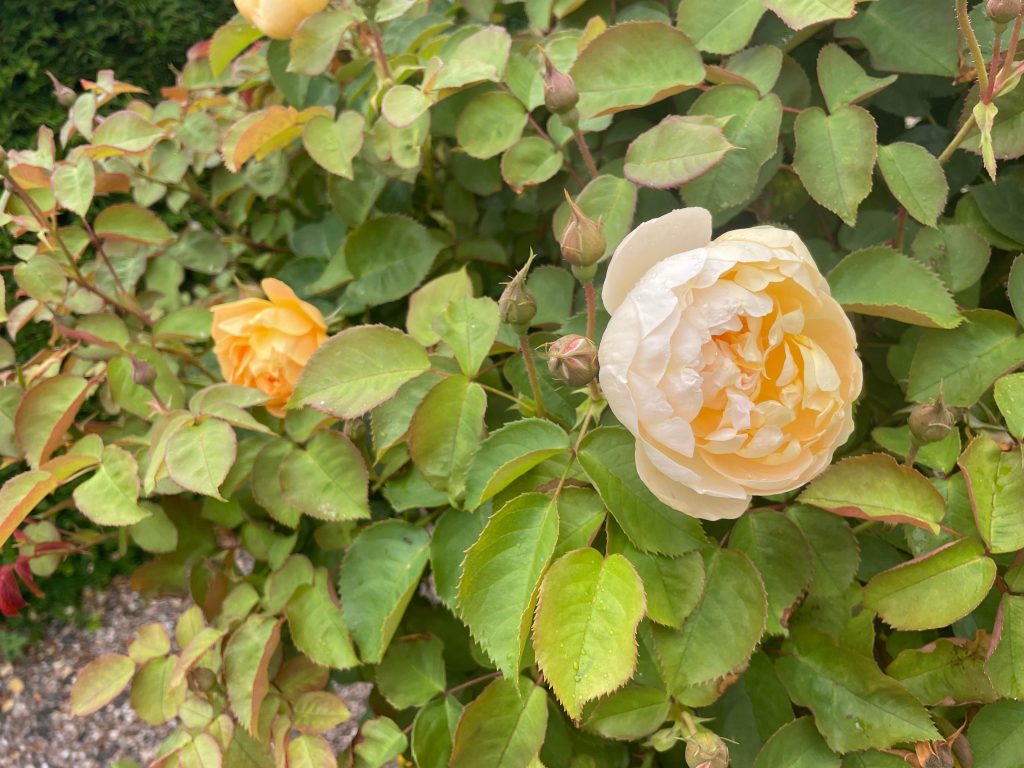
I will be ordering several new yellows for my last ever garden including the wonderfully named ‘Tottering By Gently’ – perfect for an old lady gardener.
